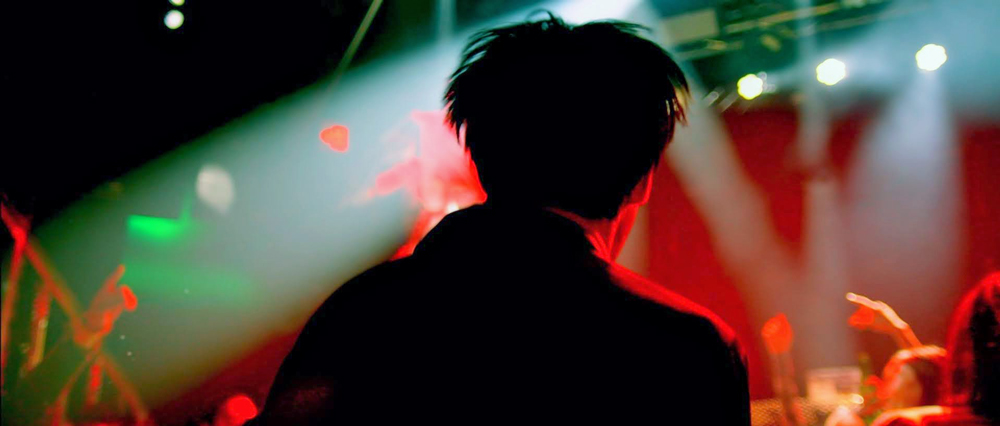![" The Abyss" Director Ren Sudo A work cannot be created without intense energy [Director's Interview Vol.351]](https://cinemore.jp/images/8b46ab66b507f3ead78448d6434e9c0e15bc09dc5756fd160aa984c9f35e8e80.jpg)
" The Abyss" Director Ren Sudo A work cannot be created without intense energy [Director's Interview Vol.351]
The movie `` Backlight '' (21) was directed and starred by young actor Ren Sudo and written by Aya Watanabe. Although it was an independent film of about 60 minutes, its lush worldview boasted a level of perfection that belied the director's first work. Sudo was even involved in the distribution and promotion of `` Backlight ,'' and began showing the movie at a movie theater in Hiroshima, where the movie was filmed, and also had a successful screening in Tokyo.
The latest work that Sudo wrote, directed, and starred in is `` The Abyss.'' This work, which began planning before `` Backlight '', vividly depicts Shibuya, the setting of the story, while hiding within itself the distortion of an initial impulse. This is in contrast to his previous work, ``Backlight,'' which boasted a sophisticated level of perfection. Considering that Sudo himself wrote the script this time, `` The Abyss'' can also be called his first work.
How did Ren Sudo create " The Abyss"? I spoke to him.
" The Abyss" synopsis
Kei (Ren Sudo) is a 23-year-old who lives part-time at a bar in Shibuya. One day, news arrives that his missing brother committed suicide at the beach in his hometown. At a funeral, Kei meets Rumi (Arisa Sasaki), a woman who was once assaulted by her brother, and is strongly attracted to her. After that, the two meet again by chance, and it is Rumi who reaches out to Kei, who is hurt. Kei feels at ease with Rumi, and her feelings for him grow stronger. However, one day, Kei found out everything about Rumi, and Rumi disappeared from Kei's sight. After a while, Rumi suddenly returns to Kei, covered in scars both physically and mentally. From there, the two begin their escape.
Index
- I had no choice but to turn what I had into a movie.
- “Location” and “Mood”
- Works cannot be created without intense energy.
I had no choice but to turn what I had into a movie.
Q: When and how did you start planning and writing the script?
Sudo: We started planning for `` Backlight '' (21) about two years ago. I was having a planning meeting with Aya Watanabe, and I often talked about my brother. Then Aya-san said, ``Maybe we should just make the story of those brothers into a movie.'' The episode with my brother in the play is not a true story, but at the core of the story is my own feelings. This is a movie that starts from my feelings for my brother.
Q: You co-wrote the script with Aya Watanabe, but how did you work on it specifically?
Sudo: At the planning meeting I just mentioned, we started by asking, ``What should I write about?'' and receiving advice. I started without having written much of a script, so I just wrote it and sent it to Aya-san, and it felt like I was rehearsing with my master (lol).

"ABYSS The Abyss" (C) Movie "ABYSS The Abyss" Production Committee
Q: The details of Shibuya at night are clearly depicted, but did you do any research?
Sudo: I haven't done much research or interviews. It feels like I created it from my own drawer, based on my experiences playing and working in Shibuya. Although some parts are exaggerated. The characters that appear are “that person” based on actual experiences (lol). If `` Backlight '' is a work created by expanding moods and delusions, `` The Abyss'' is a work that sublimates the energy that comes out of me. I had no choice but to face myself, struggle, and turn what was inside me into a film.
Q: Were the shooting scenes different from those for `` Backlight ''?
Sudo: It was completely different. When I was working on `` Backlight ,'' I didn't struggle too much. At that time, I had a goal of ``mood,'' and it felt like I was putting together things I liked to express that mood. On the other hand, when I was working on `` The Abyss,'' I felt like I was looking for something while I was getting lost.
The script for `` Backlight '' was written by Aya Watanabe, so it was easy to create cuts and imagine the costumes. The blueprint was good, so I didn't need much of my own strength, and I felt like I was in the passenger seat of a car. Comparing the level of completion of the script, `` The Abyss'' is much rougher than `` Backlight .'' It's close to my ability as a film director. There are parts of the story that were completed through brute force, like figuring out what I wanted to do from that rough script. It was a very powerful movie.

